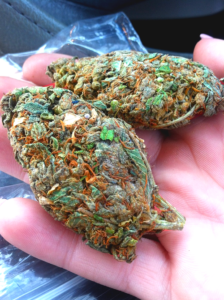Weed in Rahimah — a clear, practical guide.
Note up front: Because “Rahimah” (also spelled Rahaima, Raḥīmah) refers to a locality in the Eastern Province of Saudi Arabia near Ras Tanura, this guide treats the legal and practical situation in the context of Saudi law and regional realities. If you meant a different “Rahimah” (a person, a neighbourhood in another country, etc.), tell me and I’ll adapt the article. The statements about law, enforcement and health below are drawn from public, reputable sources (Saudi Ministry of Interior, international organizations and reporting) — see outbound links at the end for the original material.
Table of contents Weed in Rahimah
- Introduction — why this matters
- Quick facts about Rahimah (geography & context)
- What “weed” (cannabis) is — brief primer
- The legal situation in Saudi Arabia and how it applies to Rahimah
- Enforcement, penalties and recent trends
- Health effects, risks and interactions
- Medical cannabis — global context vs local reality
- Harm reduction and safety advice (legal, medical, travel)
- How to get help in Rahimah / Eastern Province if you or someone you know needs treatment
- FAQs (short, practical answers)
- Outbound links and further reading
- Conclusion
1. Introduction — why this matters Weed in Rahimah
Cannabis — commonly called weed, marijuana, pot — is one of the most widely discussed substances worldwide: legal in parts of Europe, Canada, and parts of the United States; decriminalized or restricted elsewhere; strictly illegal in many countries. For people who live in or travel to Rahimah (Eastern Province, Saudi Arabia), understanding the difference between global trends and local law is essential. This article explains what cannabis is, the specific legal and enforcement reality that applies in Rahimah, health effects, harm-minimizing steps, and where to find help locally. Where possible, I cite official or reputable sources so you can follow up. (Mapcarta)
2. Quick facts about Rahimah (geography & context)
- Where: Rahimah (also transcribed as Rahaima / Raḥīmah) is a locality in Saudi Arabia’s Eastern Province, close to Ras Tanura and the Gulf coast. It’s part of a region with oil infrastructure and port towns.
3. What “weed” (cannabis) is — a brief primer
Cannabis is a plant genus whose flower and resin contain psychoactive compounds (mainly THC — tetrahydrocannabinol) and other cannabinoids (like CBD). People use cannabis in multiple forms: smoked flower, hashish, oils, edibles, tinctures, and extracts. Effects can range from relaxation and altered perception to anxiety, tachycardia, impaired coordination and, in vulnerable people, psychosis-like symptoms. Frequency of use, dose, potency, method (smoking vs edible) and individual health determine the risk profile.
This article uses “weed” and “cannabis” interchangeably. The health, legal and practical advice below focuses on minimizing harm and staying within local laws.
4. The legal situation in Saudi Arabia and how it applies to Rahimah
Bottom line: cannabis is illegal in Saudi Arabia — possession, use, sale, cultivation and trafficking are criminal offences and can carry severe punishments. This national law applies equally in Rahimah as in the rest of the Kingdom. The Ministry of Interior and Saudi legal codes treat narcotics offences harshly, and penalties can include imprisonment, lashes, heavy fines — and for serious trafficking offences, capital punishment has been reported in recent years.
- Possession/use: Even small amounts for personal use are criminalized; first-time offenders may face imprisonment, fines or corporal punishment depending on circumstances. (Wikipedia) Because laws are enforced by national authorities, localities like Rahimah do not have separate cannabis statutes — Saudi law is uniform across provinces. That makes it particularly important for residents and visitors in Rahimah to assume zero tolerance.
5. Enforcement, penalties and recent trends Weed in Rahimah
Enforcement in Saudi Arabia is carried out by police and security services; cases are handled by the criminal justice system under Saudi penal and drug-control provisions. The Ministry of Interior’s public guidance states that narcotics offenses are punishable by imprisonment, fines and lashes; repeated or aggravated crimes receive harsher treatment. For the most serious trafficking or smuggling offences, courts have in some instances imposed long prison terms and in certain reported cases, capital punishment. International monitoring organizations have documented a rise in executions connected to drug offences in recent years. Weed in Rahimah
6. Health effects, risks and interactions
Using cannabis carries a set of potential health risks. Key points to consider:
- Short-term effects: relaxation, altered time perception, impaired coordination and reaction time, increased heart rate, anxiety or panic in some users, short-term memory impairment. Weed in Rahimah
- Long-term effects: heavy, long-term use (especially starting in adolescence) can be associated with cognitive changes, dependence, and mental health challenges for susceptible individuals.
7. Medical cannabis — global context vs local reality
Worldwide, many countries have recognized medical uses for cannabis derivatives (e.g., for refractory epilepsy, some cancer symptoms, spasticity in MS) and have created regulated medical programs.
8. Harm reduction and safety advice (legal, medical, travel)
If you live in or are traveling to Rahimah and want to minimize risk, follow these practical, non-judgmental harm-reduction steps:
Legal-first approach (must-do)
- Do not possess or use cannabis while in Saudi Arabia. Given the severe penalties and strict enforcement, the only truly safe legal position is to avoid possession and use entirely.
Health & safety
- If you use cannabis in situations where it is legal, be aware of dose and method; if you are in Rahimah or traveling, those considerations are academic — legal risk takes precedence.
Travel & residency advice
- Declare nothing — avoid possession: don’t attempt to bring cannabis or cannabinoid products into Saudi Arabia, even in luggage. Airport screenings are strict.
If you’re a foreign national arrested
- Contact your embassy or consulate immediately. Consular assistance is a critical resource; they can help navigate local procedures and provide lists of local lawyers. Note: consular assistance cannot override local criminal law.
If you’re worried about addiction or dependence
- Seek medical care and addiction treatment. Saudi Arabia runs treatment and rehabilitation programs; local hospitals and specialized centers can offer medically supervised support. Programs combine medical management, counselling and social support.
9. How to get help in Rahimah / Eastern Province
If you or someone you know in Rahimah needs help with substance use:
- Emergency: call local emergency numbers or go to the nearest hospital emergency department. Emergency care is available in the Kingdom’s hospitals.
- Local hospitals: the Eastern Province has hospitals and clinics; for specialized addiction services, larger regional hospitals or government treatment programs are typical entry points. Research and call the hospital in your nearest city (e.g., Ras Tanura area hospitals or regional referral centres) for guidance.
10. FAQs — short, practical answers
Q1: Is cannabis legal in Rahimah?
No. Rahimah is in Saudi Arabia where cannabis is illegal for possession, use, sale and cultivation. Penalties can include imprisonment, lashes, heavy fines — and severe trafficking offences can lead to capital sentences in extreme or aggravated cases.
Q2: What happens if a foreign visitor is caught with weed?
Foreign visitors have faced arrest, detention, fines, deportation and imprisonment in Saudi cases. Consular assistance should be sought immediately. Recent reporting shows foreign nationals are sometimes subject to the same severe penalties as citizens for serious offences.
Q3: Are there medical cannabis programs in Saudi Arabia?
No widespread legalized medical cannabis program exists in Saudi Arabia. Medical access to cannabis derivatives is not a routine legal option; patients should consult licensed doctors for approved, legal treatments.
Q4: What are safe alternatives if I use cannabis for medical purposes and will travel to Rahimah?
Talk to your doctor before travel. They can advise on legal alternatives, approved medications, or documentation. Do not travel with cannabis or cannabinoid products.
12. Conclusion — practical takeaways
- Rahimah is in Saudi Arabia’s Eastern Province; the Kingdom maintains strict, punitive drug laws that apply everywhere in the country. Assume zero tolerance for cannabis possession or use while in Rahimah.
- Health risks associated with cannabis use exist and should be treated seriously — if medical help is needed, access care promptly.

I have used Global Weedworld (Globalweedworld@galaxyhit.com) at least 4-10 times and every time it has been a top notch.
He is the best local plug you can find around. He is very pleasant, friendly and fast. He is a lifesaver.
He sells top shelf WEED and other stuffs at moderate prices. I will always recommend this guy when people ask me my ” go-to”.
All you have to do is follow his instructions.
Just send him an email and I bet you will come back for more once you finish with what you bought because his quality is amazing.
Also Contact him on his telegram link telegramhttps://t.me/GlobalweedWorld
⚠️ Know that he do not have telegram channels only the telegram link above

The strain was exactly what I was looking for. It had that perfect balance, and the high was smooth. Also, the packaging was discreet and professional. Really impressed
I’ve been buying online for a while, but this shop’s service and product quality set them apart.
Everything was fresh, potent, and the customer service is outstanding
My first purchase and I’m hooked.
Excellent product and the customer support was super helpful in answering all my questions. Highly recommend this site
From browsing to checkout, everything was seamless. Delivery was on time, and the product exceeded my expectations. I’ll be recommending this to my friends
I’ve been buying from a lot of different places, but this one stands out. The bud is top-notch, and the prices are reasonable.
Will be ordering again soon! Amazing experience! The product was exactly as described,
and the packaging was on point—safe and odor-free. Thank you!
Delivery was crazy fast, and the product… This place is setting the bar for online weed shops. Keep doing what you’re doing. You’ve got a loyal customer for life.
I was worried about ordering online, but the packaging was perfect completely. You can tell they care about their customers. Fast replies and reliable support.